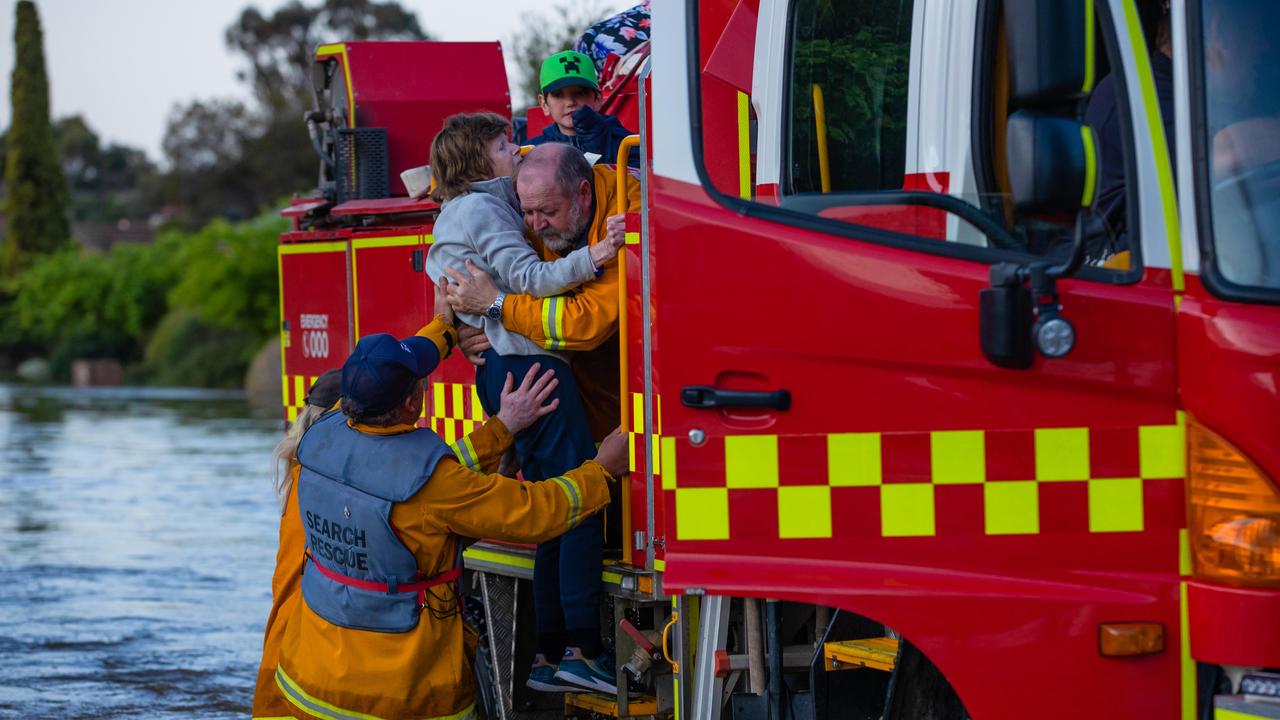CFA burnout: fails to recruit and retain volunteer firefighters
CFA firefighter numbers are crashing as it struggles to retain ageing volunteers and recruit new ones in the face of major bureaucratic hurdles.

The CFA’s capacity to retain and rebuild its ageing firefighting force is being undermined by what volunteers say are overwhelming bureaucratic hurdles and lack of access to ever more complex training.
Many applicants wanting to join the CFA are having to wait six months or more before they can walk onto the fire ground, due to delays in the application process and lack of access to mandatory general firefighter training.
Evidence the CFA is struggling to retain and recruit volunteers can be seen in operational firefighter numbers, which have dropped 16.3 per cent, from 34,380 in June 2019 to 28,785 today.
CFA Kilmore Captain Hayden Dally says he has four applicants, and “I don’t believe they will be on the fire ground this season”.
Other brigades say applicants are just giving up, after waiting months to get into a general firefighter course, which includes 6-8hrs of theory and 10-20 hours of practical training.
Volunteer Fire Brigades Victoria chief executive Adam Barnett said new volunteers must now fill out multiple page application forms, undergo criminal checks, perform medical assessments, and register for working with children clearances.
“We are asking volunteers to jump through more and more hoops and often with no evidence about the benefits that are supposedly achieved through the additional hoops,” he said.
“Think of the process you go through to open a bank account, and this is what volunteers are expected to do many times over, just for the pleasure of giving up their time to serve their community.”
The volunteers that remain are also getting older, as are their trucks and stations.
The Victorian Government’s own data shows that in the year 2000 just 12.3 per cent of CFA volunteers were aged over 65, but the proportion had almost doubled to 21.4 per cent by 2016.
Limestone Fire Brigade member Neil Beer said the proportion of older volunteers was bound to be far higher today.
“I’m pushing 75, and there’s a lot of members like me,” Mr Beer said.
The most recent CFA data states close to half its volunteers are aged over 55, but gives no detail on the proportion over 65.
Dunrobin volunteer Kelvin Bateman said his brigade struggled to recruit young volunteers, leaving the community reliant on the same small crew.
Others told The Weekly Times that CFA training was getting “harder and longer”, from the three nights and two full days to complete the general firefighter course, to those for existing volunteers wanting to upgrade their skills – such as the 10 days required to complete the responder urban firefighter training.
But CFA Chief Officer Jason Heffernan said “the increasing complexity of modern firefighting necessitates more contemporary training”.
“Fires today often involve hazardous materials, advanced technology, and unique building structures that require specialised knowledge and skills,” Chief Heffernan said.
“Firefighters must be prepared to handle a wide range of scenarios, from the agricultural fast running grassland fires to structural fires, and hazardous material spills and urban rescue missions.”
Chief Heffernan said the “in the last 12 months 5990 new applications were received with more than 61 per cent aged under 35”.
Yet the CFA’s own website shows that in October last year, it had 29,015 operational volunteer firefighters, compared to 28,785 as of this week.

Mr Barnett said VFBV had managed to get the CFA over the line on reviewing the general firefighter course, but said one of the biggest problems was the “one size fits all” approach to training.
“While volunteer feedback from busier brigades tend to be more positive, our more regional communities are telling us it is simply too long and does not match their relevant risk profiles,” he said.
Mr Barnett said emergency service agencies also needed to work together so that volunteers were not forced to deal with separate government agencies, filling out endless forms for each – often asking identical information – and then needing to jump through endless hoops to send in photos and validate 100 points of ID.
“A volunteer who is wanting to join say CFA, SES and Life Saving Victoria needs to do all these steps again each and every time they join another service.
“And they wonder why volunteers get frustrated.”
But rather than fixing the problem, earlier this year Emergency Management Victoria pulled the plug on the Volunteer Consultative Forum, representing 100,000 emergency service volunteers – from the CFA to SES, Red Cross, ambulance, life saving and coast guard, Salvation Army and others.
EMV has also failed to recognise volunteers’ efforts during the 2022 floods.
In its submission to the Parliamentary Inquiry into the 2022 floods, EMV made no mention of CFA volunteers’ efforts in protecting communities, working with the SES to rescue residents and consequent clean-up.
Yet VFBV estimates CFA volunteers contributed to more than 8000 deployments during the floods.
EMV’s 115-page submission to the inquiry makes just one mention of volunteers, stating:
“more than 2500 volunteers from 147 VICSES units were involved in the flood response, with more than 145,000 hours collectively volunteered”.
Volunteers told The Weekly Times, while they have the respect of their communities, they get no thanks from CFA headquarters and government.
More Coverage
Originally published as CFA burnout: fails to recruit and retain volunteer firefighters




